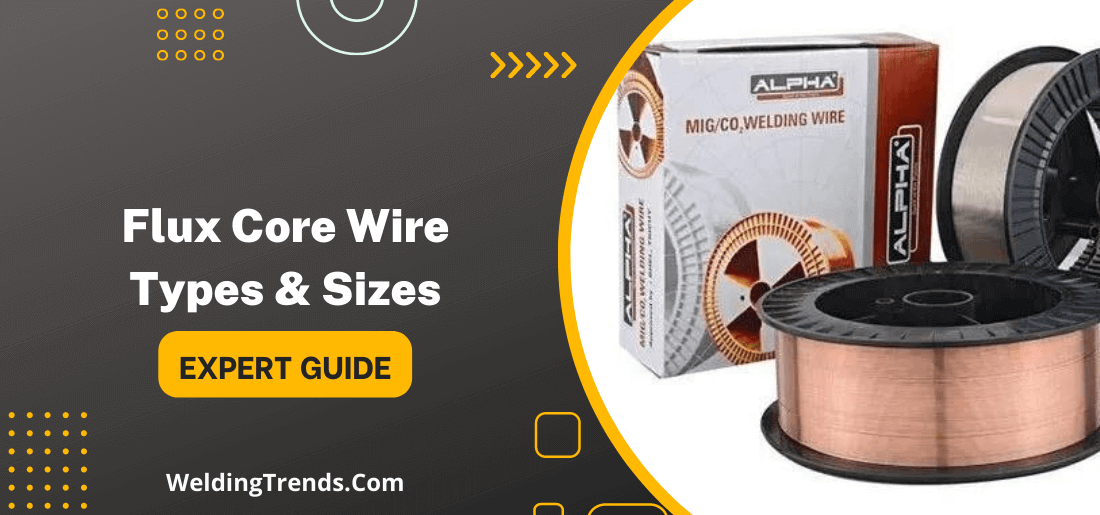Flux core wire is a type of welding wire that contains a core of flux, a material that helps to shield and protect the weld from contamination and oxidation during the welding process. Flux core wire is used in various welding applications including construction, fabrication, and repairs, and it is available in different types and sizes.
The type of flux core wire used for welding depends on the material being welded, the welding process, and the desired results. Some common types of flux core wire include self-shielding flux core wire, gas-shielded flux core wire, and dual-shielded flux core wire. Each type of flux core wire has unique characteristics that make it suitable for specific welding applications.
In addition to different types, flux core wire is also available in various sizes, typically ranging from 0.030 inches to 0.045 inches in diameter. The size of the flux core wire used for welding depends on the thickness of the metal being welded and the desired penetration and bead size.
Understanding the different types and sizes of flux core wire is essential for achieving successful welding results. By selecting the right flux core wire for the welding application, welders can achieve strong, high-quality welds that meet their specific requirements.
In this blog post, we’ll take a look at the most common flux core wires and their uses. We’ll also discuss how to select the right wire size for your application.
What is flux core wire and what are its uses?
Flux core wire is a type of welding wire that is used for welding in difficult-to-reach areas or in situations where there is little or no access to a shielding gas. This type of wire is also used for welding thicker materials, as it can provide a strong weld without the need for multiple passes.
There are two types of flux core wire: gasless and gas-shielded.
Gasless flux core wire does not require the use of shielding gas, while gas-shielded flux core wire does require the use of shielding gas.
Some common uses for flux core wire include:
- Welding in difficult-to-reach areas
- Welding thicker materials
- Welding in situations where there is little or no access to a shielding gas
different types of flux core wire
There are different types of flux core wire that you can use for your welding project. Each type has its advantages and disadvantages, so it is important to choose the right one for your needs.
- The most common type of flux core wire is the E71T-11. This type is good for general purpose welding and works well with both thin and thicker metals. It is also relatively easy to use, making it a good choice for beginners.
- Another popular type of flux core wire is the E71T-GS. This type is designed for use with thinner metals, such as aluminum or stainless steel. It produces less smoke and spatters than other types of wire, making it a good choice for applications where appearance is important.
- E71T-12 type of wire is designed for use with thicker metals, such as cast iron or heavy gauge steel. It produces more smoke and spatters than other types of wire, but it can handle the higher temperatures and pressures that are associated with thicker metals.
- Finally, the E71T-10 type of wire is designed for welding in difficult to reach places. It is a thin wire that can be used in tight spaces without producing too much smoke or spatter.
When choosing a flux core wire for your project, it is important to consider the type of metal you will be welding and the thickness of the metal.
You should also consider the purpose of the weld and the amount of time you have to complete the project. With a little bit of research, you should be able to find the right type of wire for your needs.
different sizes of flux core wire
Flux core wire is available in a variety of sizes. The most common sizes are .035 inches (0.9 mm), .045 inches (1.1 mm), and .052 inches (1.3 mm). Other sizes include .030 inches (0.8 mm) and .040 inches (1.0 mm).
The size of the flux core wire you use will depend on the thickness of the metal you’re welding, the type of welding you’re doing, and your personal preference. If you’re not sure what size to use, ask a knowledgeable friend or visit your local welding supply store for help.
The size of the wire will determine the amount of material that can be deposited in a single pass. A larger diameter wire will deposit more material than a smaller diameter wire.
Keep in mind that the size of the wire also affects the amperage required to operate properly. A larger diameter wire will require more amperage than a smaller diameter wire. Be sure to check the manufacturer’s recommendations for the proper amperage range for each size of flux core wire.
When in doubt, always consult the manufacturer’s recommendations or a qualified welding professional to ensure you are using the right flux core wire for your project.
How to choose the right type and size of flux core wire for your project?
The size and type of wire you need will depend on the project you’re working on.
- If you’re welding thin metal, then you’ll need a smaller diameter wire.
- For thicker metal, a larger diameter wire is needed.
The type of metal your welding will also affect the type of wire you need. Steel will require a different type of wire than aluminum, for example.
You can consult with a welding professional or look up specific information online to figure out which type and size of wire are right for your project.
Tips for using flux core wire safely and effectively
When using flux core wire, there are a few safety tips to keep in mind.
- First, always wear gloves and eye protection when using this type of wire.
- Second, be sure to work in a well-ventilated area.
- Third, never use flux core wire near an open flame or another heat source.
- Finally, always follow the manufacturer’s instructions carefully when using flux core wire.
By following these simple safety tips, you can help ensure that you use flux core wire safely and effectively.
FAQs – flux core wire types & sizes
Which is better: 0.30 or 035 flux core wire?
There’s no definitive answer to this question since it depends on several factors, including the specific application, the type of metal being welded, and the welder’s preferences.
In general, however, 0.30 flux core wire is considered to be better for thicker metals, while 0.35 flux core wire is better for thinner metals.
Ultimately, it’s up to the welder to experiment with both types of wire to see which one works best for them.
What do the numbers mean on flux core wire?
The numbers on the flux core wire indicate the diameter of the wire. For example, 0.30 flux core wire is a 30 gauge wire.
The larger the number, the thicker the wire. The thicker the wire, the more amperage it will require to weld.
Which is the best flux core welding wire?
There are a few different types of welding wire that can be used for flux core welding, but the most popular type is ER70S-6. This wire is ideal for use with mild steel and can provide good results when used with other metals as well.
Does flux core wire need gas?
Flux core wire does not require gas, making it a popular choice for welding outdoors or in other situations where gas is not available.
However, because it relies on the flux to create the arc, it can be more difficult to control than other types of welding wire.
Summary:
Flux core welding wire is available in a variety of types and sizes to fit your specific welding needs. Choose the flux core wire that is best suited for the project you are working on, and be sure to read the manufacturer’s recommendations for use.
With the right flux core wire and size, you can produce high-quality welds that will hold up under pressure. Be sure to select the right type and size of wire to ensure quality welds.




